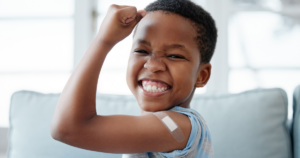By Katie Kemble, DNP, ARNP, FNP-C, AOCNP, FAANP
Being told you have cancer is lifechanging. There’s the impact of the initial diagnosis, followed by various treatment modalities that may include surgery, chemotherapy, immunotherapy, radiation therapy and new, targeted therapies. Many of these cancer treatments have various physical and psychosocial side effects. These may include fatigue, anxiety, depression, sleep disturbances, insomnia, cognitive changes and chemo brain, deconditioning, decreased range of motion, pain, neuropathy, social isolation, lack of control, weight changes, body image concerns, and for some, post-traumatic stress. The side effects cancer survivors experience can lead to an overall decrease in quality of life.
Cancer survivorship programs have been implemented at comprehensive cancer centers, yet rehabilitative services are still lacking or are underdeveloped. So, what are some components of a cancer survivorship wellness and rehabilitation program? Below are highlights from a collaborative program the EASE Cancer Foundation developed to support exercise and survivorship education:
- Individual pre- and post-physical-fitness testing.
- Cardiovascular, strength and flexibility training.
- Educational classes on exercise, stress management, sleep hygiene, healthy eating strategies and cancer risk reduction.
- Nutrition counseling and weight management.
- Scar mobilization and lymphatic massage techniques to reduce the risk of lymphedema.
- Low impact aquatic exercise.
- Pilates.
- Chemo brain and cognitive games.
- Motivational support and training.
- Lymphatic drainage techniques.
What can you do on your own? Start with the basics; eat, sleep and be active every day.
- Optimize sleep to maximize health. Sleep improves mood and physical functioning, regulates hormones and reduces disease risk. Aim to get eight hours of sleep per night. Improving the quality of your sleep is a great foundation for creating a personal wellness plan.
- Eat a whole food diet rich in grains, vegetables and fruits – eat the rainbow. Getting a variety of colorful phytochemicals each day can strengthen your immune system, decrease inflammation and reduce your risk for chronic diseases.
- Implement a sustainable exercise routine that’s realistic to maintain.
The American Institute for Cancer Research (AICR) has great resources and offers a blueprint for healthy living. AICR notes that 40% of cancers are preventable and one’s cancer risk can be reduced by eating a healthy diet, maintaining a healthy weight and striving to be more active every day. If there’s a fountain of youth, it’s exercise.
World Cancer Day is February 4 this year. The day is set aside each year to increase awareness of cancer and reduce the impact of this deadly disease. Through heathier lifestyle choices, you can reduce your cancer risk and potentially live a longer, fuller life. Visit your nurse practitioner or other health care provider for more information, well-patient check-ups and screening.

